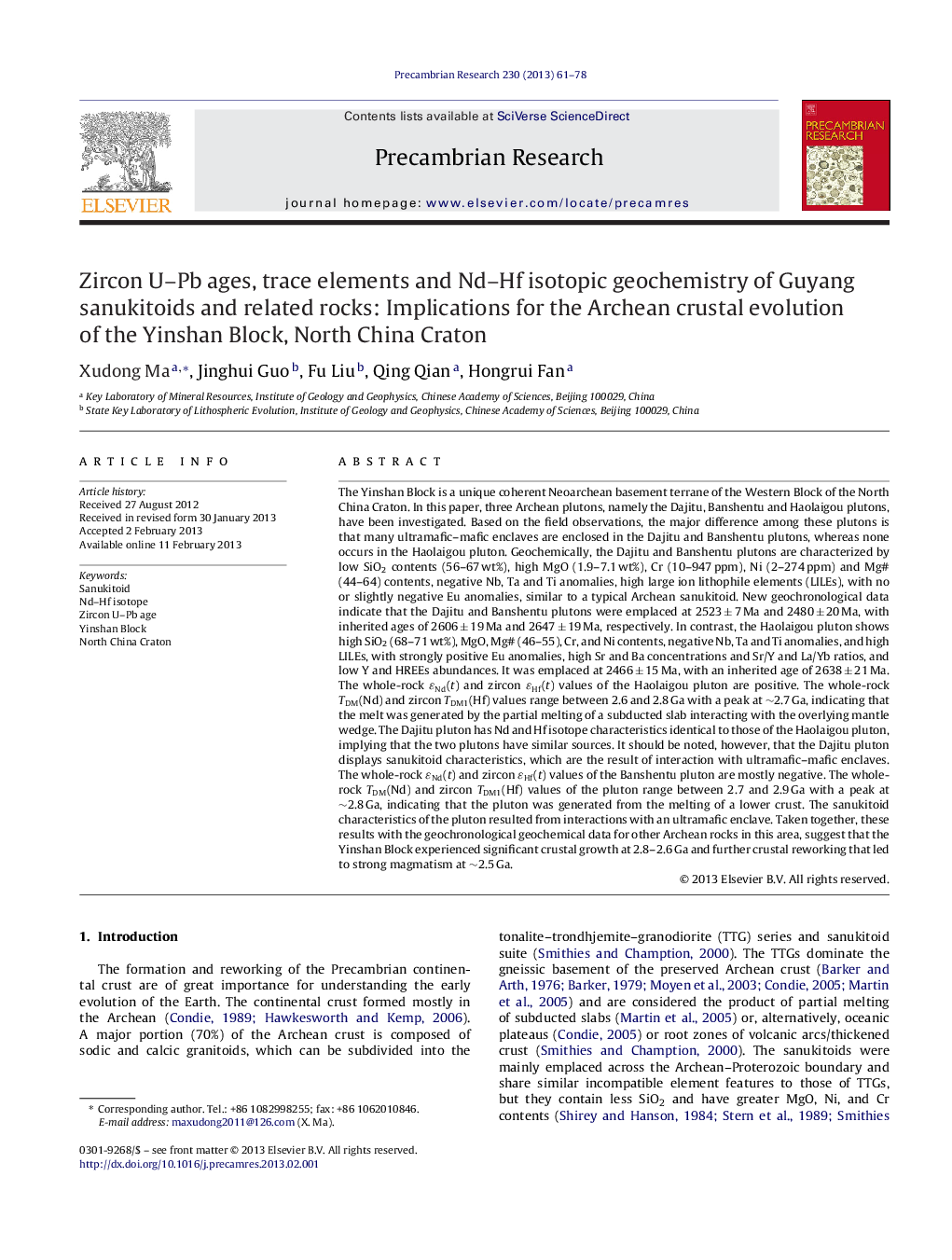| Article ID | Journal | Published Year | Pages | File Type |
|---|---|---|---|---|
| 4723241 | Precambrian Research | 2013 | 18 Pages |
The Yinshan Block is a unique coherent Neoarchean basement terrane of the Western Block of the North China Craton. In this paper, three Archean plutons, namely the Dajitu, Banshentu and Haolaigou plutons, have been investigated. Based on the field observations, the major difference among these plutons is that many ultramafic–mafic enclaves are enclosed in the Dajitu and Banshentu plutons, whereas none occurs in the Haolaigou pluton. Geochemically, the Dajitu and Banshentu plutons are characterized by low SiO2 contents (56–67 wt%), high MgO (1.9–7.1 wt%), Cr (10–947 ppm), Ni (2–274 ppm) and Mg# (44–64) contents, negative Nb, Ta and Ti anomalies, high large ion lithophile elements (LILEs), with no or slightly negative Eu anomalies, similar to a typical Archean sanukitoid. New geochronological data indicate that the Dajitu and Banshentu plutons were emplaced at 2523 ± 7 Ma and 2480 ± 20 Ma, with inherited ages of 2606 ± 19 Ma and 2647 ± 19 Ma, respectively. In contrast, the Haolaigou pluton shows high SiO2 (68–71 wt%), MgO, Mg# (46–55), Cr, and Ni contents, negative Nb, Ta and Ti anomalies, and high LILEs, with strongly positive Eu anomalies, high Sr and Ba concentrations and Sr/Y and La/Yb ratios, and low Y and HREEs abundances. It was emplaced at 2466 ± 15 Ma, with an inherited age of 2638 ± 21 Ma. The whole-rock ɛNd(t) and zircon ɛHf(t) values of the Haolaigou pluton are positive. The whole-rock TDM(Nd) and zircon TDM1(Hf) values range between 2.6 and 2.8 Ga with a peak at ∼2.7 Ga, indicating that the melt was generated by the partial melting of a subducted slab interacting with the overlying mantle wedge. The Dajitu pluton has Nd and Hf isotope characteristics identical to those of the Haolaigou pluton, implying that the two plutons have similar sources. It should be noted, however, that the Dajitu pluton displays sanukitoid characteristics, which are the result of interaction with ultramafic–mafic enclaves. The whole-rock ɛNd(t) and zircon ɛHf(t) values of the Banshentu pluton are mostly negative. The whole-rock TDM(Nd) and zircon TDM1(Hf) values of the pluton range between 2.7 and 2.9 Ga with a peak at ∼2.8 Ga, indicating that the pluton was generated from the melting of a lower crust. The sanukitoid characteristics of the pluton resulted from interactions with an ultramafic enclave. Taken together, these results with the geochronological geochemical data for other Archean rocks in this area, suggest that the Yinshan Block experienced significant crustal growth at 2.8–2.6 Ga and further crustal reworking that led to strong magmatism at ∼2.5 Ga.
► The Guyang Archean sanukitoids and related rock were formed at ∼2.5 Ga; ► The crustal growth in the Yinshan Block occurred at 2.8∼2.6Ga, and rework at ∼2.6Ga and ∼2.5 Ga; ► These rocks were derived from the melting of a subducted slab and lower crust, and interacted with the ultramafic enclave within the crust.
